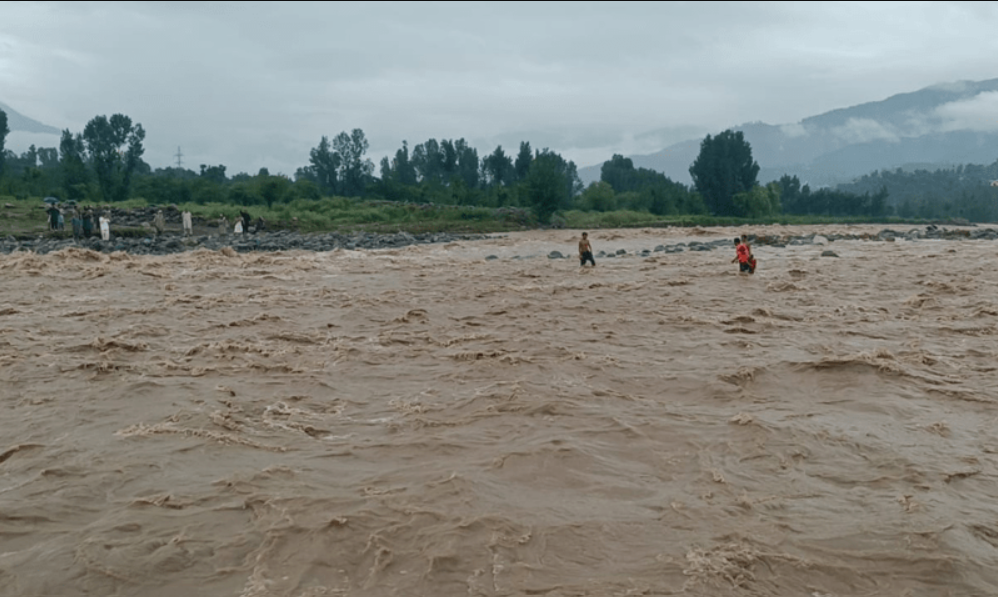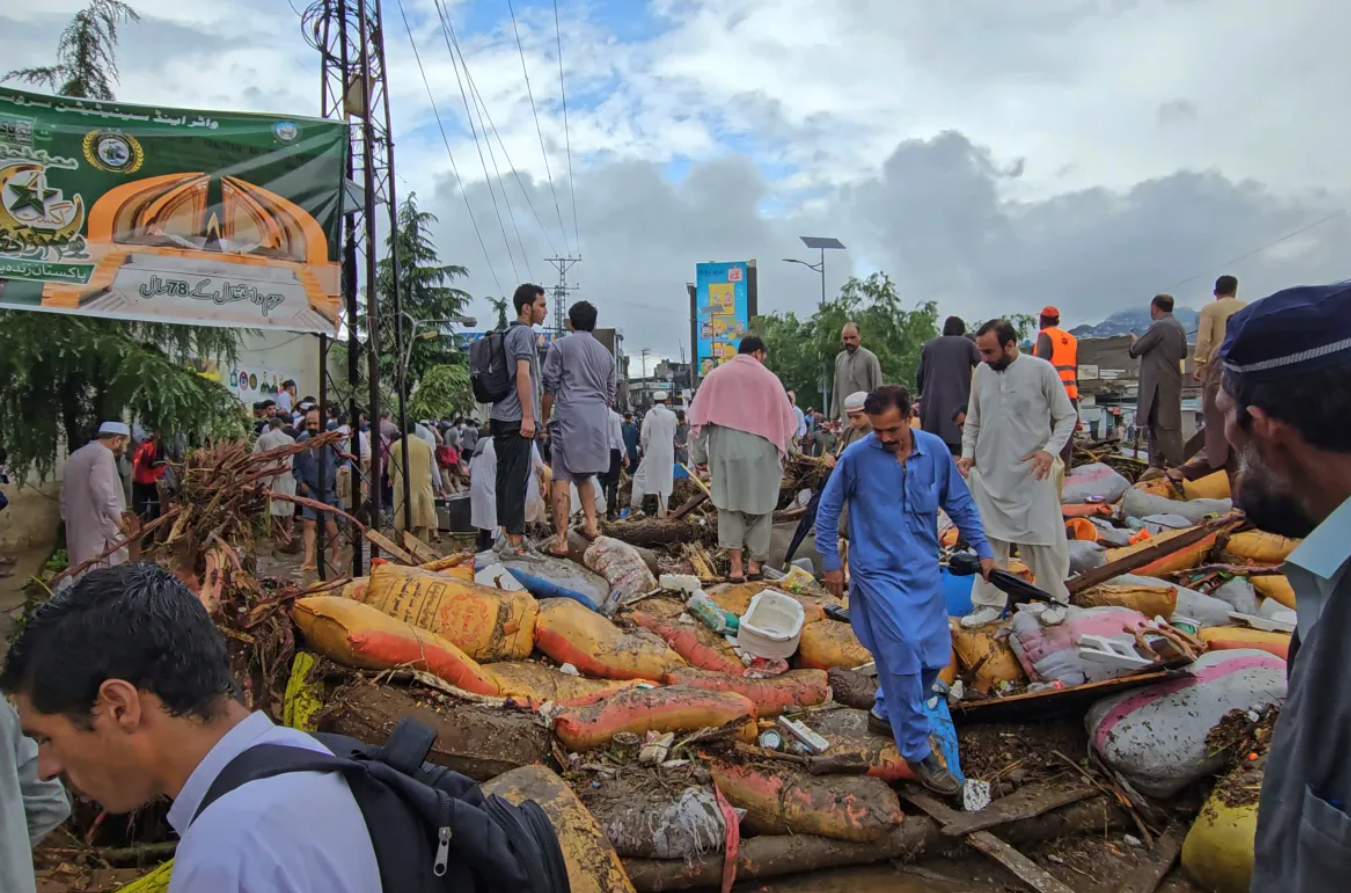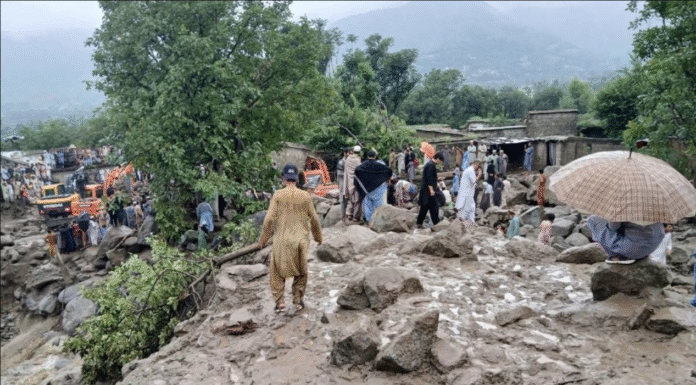Pakistan Flash Floods Disaster Leaves 321 Dead and Thousands Displaced
The Pakistan flash floods disaster has once again highlighted the growing threat of climate change in South Asia. In the northern regions of the country, particularly in Khyber Pakhtunkhwa province, torrential rains and sudden cloudbursts unleashed catastrophic flash floods, leaving at least 321 people dead in just two days.
Rescue workers, military forces, and local volunteers are struggling to reach cut-off villages where homes, roads, and bridges have been completely washed away. Officials warn that the death toll could rise further as many remain trapped under debris.
Rising Death Toll from Pakistan Flash Floods Disaster
According to the National Disaster Management Authority (NDMA), most of the fatalities occurred in Buner district, where flash floods swept through the villages of Pir Baba and Malik Pura. Overnight, rescuers pulled dozens of bodies from collapsed houses.
Dr. Mohammad Tariq, working at a government hospital in Buner, revealed that most victims died before receiving medical treatment. Tragically, many children were among the dead, as the floods struck without warning and with immense force.
Since June 2, Pakistan has reported over 541 deaths linked to heavy rains, flash floods, and landslides this monsoon season. Officials describe this year’s rainfall as “unusual” and significantly above average, a pattern experts attribute directly to climate change.

Pakistan’s Vulnerability to Flash Floods
The Pakistan flash floods disaster is not an isolated event. The country is highly vulnerable to extreme weather due to its geography and weak infrastructure. Monsoon rains supply nearly 75% of South Asia’s annual rainfall, which is vital for agriculture, but they also bring devastating consequences.
In 2022, Pakistan experienced its worst floods on record, killing over 1,700 people and causing economic losses estimated at $40 billion. This year, experts warn that worsening climate conditions are making flash floods and cloudbursts increasingly common in mountainous areas.
Humanitarian Crisis in Northern Pakistan
Rescue teams have evacuated more than 3,500 tourists stranded in flood-affected areas. However, thousands of families remain displaced, sheltering in makeshift camps, schools, and mosques. Food, clean water, and medical supplies are in short supply.
Eyewitness Mohammad Khan, a resident of Pir Baba, described the horror:
“The floodwater came so fast, we had no time to escape. Whole families were trapped inside their homes.”
The provincial government of Khyber Pakhtunkhwa has declared the districts of Buner, Bajaur, Swat, Shangla, Mansehra, and Battagram as disaster-hit zones. The Pakistani military has been deployed with helicopters and boats to aid in rescue operations.
The Role of Climate Change in Flash Floods
Environmental experts emphasize that the Pakistan flash floods disaster is directly linked to global climate change. Rapid melting of Himalayan glaciers, combined with above-normal monsoon rains, has increased the frequency of sudden cloudbursts.
Similar patterns are being observed across the border in Indian-administered Kashmir, where dozens have also died in recent days due to flooding. Both regions share the fragile Himalayan ecosystem, which scientists say is one of the world’s most vulnerable areas to extreme climate events.

Government Response and Warnings
Pakistan’s Meteorological Department has issued new alerts for heavy rains in the northwest. Citizens have been urged to take “precautionary measures” and avoid risky areas. Despite warnings, many tourists continue to travel to northern valleys, ignoring the danger of landslides and flash floods.
Deputy Commissioner Kashif Qayyum confirmed that emergency shelters have been established, but accessibility remains a challenge. Entire villages are still cut off due to washed-away roads and collapsed bridges.
Lessons from Past Floods
The Pakistan flash floods disaster serves as a reminder of the 2022 catastrophe, which displaced 33 million people and destroyed critical infrastructure. International organizations such as the United Nations and humanitarian groups have already begun coordinating relief assistance for Pakistan.
But analysts say the real challenge lies in long-term adaptation. Pakistan needs stronger flood defense systems, resilient housing, and better early-warning technology. Without these measures, experts warn, such tragedies will repeat every year.

Why Pakistan’s Future Hinges on Flood Preparedness
Pakistan ranks among the top 10 most climate-vulnerable countries in the world. Despite contributing less than 1% to global greenhouse gas emissions, it suffers disproportionately from the effects of global warming.
The Pakistan flash floods disaster has once again shown how environmental crises are not just natural events but national security threats. They destroy agriculture, displace millions, and fuel poverty and instability.
To safeguard its people, Pakistan must invest in:
-
Modern flood monitoring and forecasting systems
-
Stronger embankments and infrastructure in flood-prone zones
-
International climate finance to build resilience
-
Public awareness campaigns to ensure rapid evacuations
Conclusion
The Pakistan flash floods disaster is a stark warning that climate change is not a distant threat, it is a present-day crisis. With hundreds dead, thousands displaced, and entire communities wiped out, Pakistan faces an urgent need for stronger climate resilience and global cooperation.
If lessons from the past are ignored, future floods could cause even greater devastation. The world must take Pakistan’s struggle as a call to action for climate justice.

